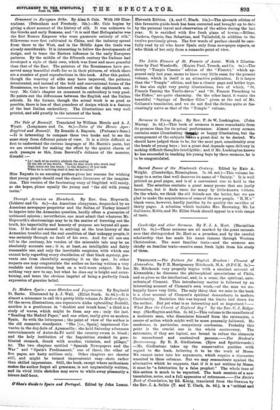Ornament in European Silks. By Alan S. Cole. With 169
Illus- trations. (Debenhain and Freebody. 32s.)—Mr. Cole begins by giving a short account of the history of silk. It was unknown to the Greeks and early Romans, and "it is said that Heliogabalus was the first Roman Emperor who wore garments entirely of silk" Silkworms were first cultivated in China, and the industry spread from there to the West, and in the Middle Ages the trade was already considerable. It is interesting to follow the developments of design, and to trace the Eastern influence in the early European patterns. By the middle of the fifteenth century the Italians had developed a style of their own, which was freer and more graceful than that of the East. The painters of the Renaissance have pre- served many beautiful stuffs for us in their pictures, of which there are a number of good reproductions in this book. After this period, though the weaving of silks may have improved, the patterns deteriorated, and instead of the bold and conventional forms of the Renaissance, we have the laboured realism of the eighteenth cen- tury. Mr. Cole's chapter on ornament in embroidery is very good. He points out the differences between the English and the Italian schools.. In the former, though the actual work is as good as possible, there is leas of that grandeur of design which is a feature of the best Italian embroidery. The illustrations are very well printed, and add greatly to the interest of the book.


















































 Previous page
Previous page